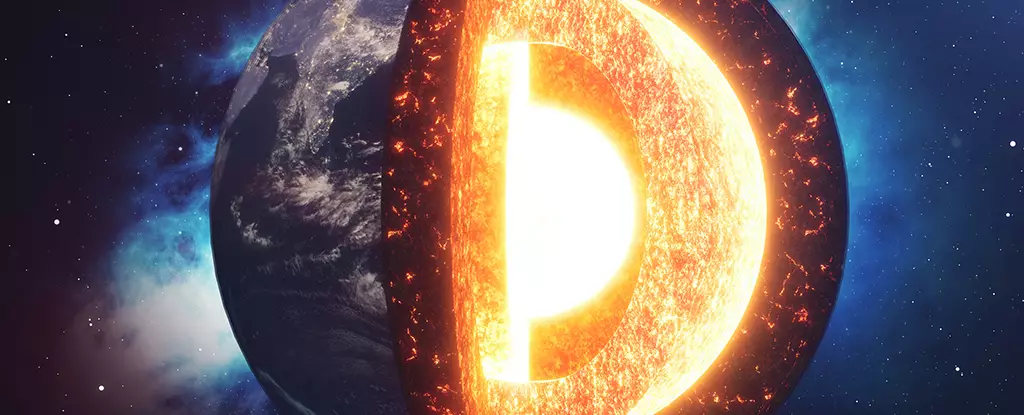Deep beneath the Earth’s surface, approximately 3,000 kilometers down, lies a perplexing band of material known as the D” layer. Scientists have been captivated by its uneven and thick patches for quite some time. Recent research indicates that this layer may have originated from an ancient magma ocean that enveloped the early Earth billions of years ago.
Unlike previous models, a new study proposes that water, which was present in Earth’s ancient magma oceans, played a significant role in the formation of the D” layer. Simulations conducted by an international team of researchers suggest that chemical reactions driven by intense pressures and temperatures at the bottom of the ancient magma ocean could have led to the creation of iron-magnesium peroxide, attracting iron and resulting in the formation of iron-rich layers within the D” layer.
The accumulation of iron-dominant peroxide in layers ranging from several to tens of kilometers thick could have caused the unevenness observed in the D” layer today. These iron-rich layers may have had an insulating effect, separating different regions at the base of the lower mantle from each other. Additionally, the presence of iron-rich peroxide, formed from ancient water within the magma ocean, could play a crucial role in shaping the heterogeneous structures of the D” layer.
According to the researchers, the formation of the D” layer and its iron-rich constituents could also explain the existence of ultra-low velocity zones (ULVZs) deep within Earth. These dense regions of material slow seismic waves down significantly, providing insights into the composition and dynamics of Earth’s interior. The team’s findings align with recent numerical modeling results, suggesting that the lowermost mantle’s heterogeneity may be a long-standing feature.
The magma ocean that led to the formation of the D” layer is believed to have been created by a massive collision with another planet around 4.5 billion years ago. Some remnants of this collision formed the Moon, while volatile elements remaining on Earth played a crucial role in the development of life. As scientists continue to explore the mysteries hidden deep within the Earth, our understanding of the planet’s history and evolution grows more profound. Despite ongoing debates and challenges, advancements in research enable us to peer back in time and uncover the secrets of Earth’s ancient past.
The study of Earth’s D” layer provides a fascinating glimpse into the planet’s complex geological history. By investigating the formation of this enigmatic layer and its connection to ancient water and iron-rich peroxides, scientists gain valuable insights into the Earth’s interior dynamics. As our understanding of Earth’s deep layers continues to evolve, so too does our comprehension of the planet’s origins and the processes that have shaped it over billions of years.


Leave a Reply